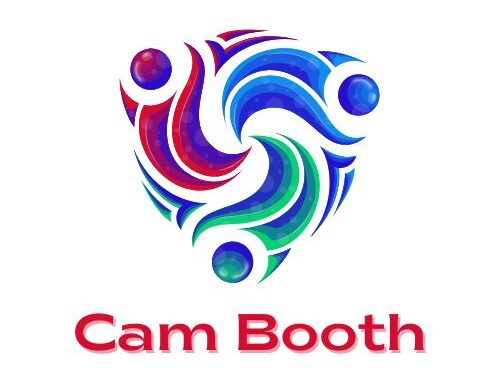When it comes to creating content, some words pack more punch than others. If you’re targeting lifestyle audiences, unlocking the power of “lifestyle keywords” is the secret to ranking higher on Google and driving quality traffic to your site. But what exactly are lifestyle keywords? How do you find them, and most importantly, how do you use them effectively?
This comprehensive guide will walk you through the importance of lifestyle keywords, how to uncover them, and expert tips for leveraging them in your content strategy.
What Are Lifestyle Keywords?
Lifestyle keywords are the search terms and phrases that capture the interests, habits, needs, and aspirations of audiences within a specific lifestyle niche. These keywords reflect the way people live their lives, what they care about, and the kind of solutions or inspiration they seek.
For example:
- For wellness enthusiasts, lifestyle keywords might include “yoga poses for beginners” or “clean eating meal plans.”
- Home decor fans may search for “modern farmhouse living room ideas” or “budget home organization tips.”
- Travel-focused audiences could type in “best solo travel destinations” or “packing guide for Europe.”
What sets lifestyle keywords apart is their ability to connect on a personal level. They answer questions, provide inspiration, and often align with trendy topics that resonate with audiences deeply.
Why Are Lifestyle Keywords Crucial for SEO?
Want to reach your ideal audience? Lifestyle keywords bridge the gap between your content and the people who are actively searching for it. Here’s why they’re a game-changer:
1. Targeted Traffic
Lifestyle keywords don’t just drive traffic; they drive the right traffic. By addressing specific topics your target audience is actively searching for, you increase the chances of attracting visitors who are genuinely interested in what you offer.
For instance, if you run a fitness blog, a broad keyword like “exercise tips” may not be as effective as the more targeted “at-home workout routine for busy moms.”
2. Higher Engagement
By focusing on lifestyle-related search terms, you’re more likely to create content that aligns with your audience’s needs and desires. The result? Higher user engagement, longer time spent on your site, and a lower bounce rate – all of which signal to Google that your content is valuable, improving your SEO rankings.
3. Reduced Competition
Lifestyle keywords often have a long-tail structure (e.g., “eco-friendly reusable water bottles for hiking”). These keywords typically face less competition than short, generic ones while being more specific, which boosts your chances of ranking.
4. Establishing Authority
Providing well-researched, niche content helps position your website as an authority within your field, building trust and encouraging repeat visits.
How to Find the Right Lifestyle Keywords
Now that you know why lifestyle keywords are important, let’s explore how to find the ones that resonate with your audience.
1. Dive into Keyword Research Tools
Tools like Google Keyword Planner, Ahrefs, and SEMrush are goldmines for discovering lifestyle-focused keywords. By entering a single term like “healthy recipes,” these tools provide a list of related search queries, their search volume, competition level, and keyword difficulty.
2. Leverage Google’s “People Also Ask” Box
Ever noticed the “People Also Ask” section when searching on Google? This underrated feature is packed with questions people are actively searching for, making it a great source of inspiration for lifestyle keyword ideas.
3. Explore Social Media Trends
Platforms like Pinterest, Instagram, and TikTok are havens for lifestyle content. Check hashtags, explore trending topics, and analyze your competitors’ content to spot lifestyle trends that align with your niche.
&nabs.
Hot Tip: Hashtags like #WellnessJourney or #TravelGoals often provide clues about what your audience is talking about and searching for.
4. Use Forums and Communities
Reddit, Quora, and niche-specific forums are teeming with conversations and questions being asked by your audience. Identify recurring search intents and craft keyword lists around those conversation topics.
For example, a discussion thread on “minimalist wardrobes” could inspire keywords like “capsule wardrobe essentials” or “how to declutter your closet.”
Using Lifestyle Keywords to Boost Content Strategy
Finding the right keywords is just the start. Once you have a strong list, how you deploy them across your content and marketing channels determines their impact. Here’s how:
1. Create Targeted Blog Posts
High-quality blog content is one of the best ways to use lifestyle keywords. Address questions your audience is asking or create how-to content using the keywords. For instance:
- Keyword: Simple meal prep for beginners
- Post Title Idea: “10 Simple Meal Prep Ideas for Beginners (Save Time & Eat Healthy)”
2. Optimize Metadata
Always integrate your lifestyle keywords into your page’s:
- Meta title
- Meta description
- URL slug
This is critical for improving your content’s visibility on search engine result pages (SERPs).
Example:
- Meta Title: “Sustainable Travel Hacks for Eco-Conscious Explorers”
- Meta Description: “Reduce your carbon footprint while exploring the world with these practical and easy eco-friendly travel tips.”
3. Weave Keywords Naturally
Gone are the days of keyword stuffing! Google now prioritizes content that uses keywords naturally. Write for humans, not just search engines. Sprinkle your chosen phrases throughout your content in a way that feels organic.
4. Use Keywords in Visual Content
Lifestyle content thrives with visual appeal. Incorporate your keywords into image filenames, alt text, and video descriptions to optimize these assets for search engines.
Example for an image caption:
“10 eco-friendly home organization tips that won’t break the bank.”
5. Repurpose Content for Social Media
Lifestyle content often performs exceptionally well on social media. Use your blog or website keywords as inspiration for captivating reels, posts, or Pinterest boards. For example:
- Repurpose “DIY garden ideas” into a story-based Instagram carousel.
6. Cluster Your Content
Once you’ve identified lifestyle keywords, create content clusters around them to establish topical authority. For instance:
- Main Blog Topic (Pillar Post): “How to Start a Capsule Wardrobe”
- Supporting Posts:
-
- “Top 10 Minimalist Clothing Brands”
- “How to Remove Clutter from Your Closet in a Weekend”
- “Seasonal Capsule Wardrobe Planner for Beginners”
Think Big, Start Small
Integrating lifestyle keywords into your content strategy may seem overwhelming at first, but taking small, actionable steps will lead to lasting results. Start with one blog post or social media strategy, analyze its performance, and refine your approach over time.
FAQs
Q: What is a capsule wardrobe?
A: A capsule wardrobe is a curated collection of essential clothing items that are versatile, timeless, and meant to be mixed and matched. The goal is to simplify your wardrobe and reduce clutter while maintaining personal style.
Q: How many pieces should a capsule wardrobe have?
A: There is no fixed number, but a typical capsule wardrobe consists of 25–50 items, including tops, bottoms, dresses, outerwear, and shoes. The exact number depends on your lifestyle and preferences.
Q: Can a capsule wardrobe work for all seasons?
A: Yes! You can adjust your capsule wardrobe seasonally by swapping out items to account for changes in weather and activities. Many people create separate capsule wardrobes for spring, summer, fall, and winter.
Q: Is a capsule wardrobe sustainable?
A: Absolutely. By focusing on quality over quantity and choosing timeless, durable pieces, a capsule wardrobe promotes sustainable fashion practices, reducing waste and environmental impact.
Q: How do I start building a capsule wardrobe?
A: Begin by decluttering your current wardrobe, identifying your favorite versatile pieces, and deciding on a cohesive color palette. From there, gradually fill any gaps with items that align with your style and needs.











